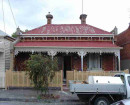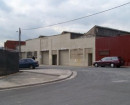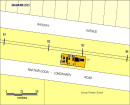ELVEZIA HOMESTEAD COMPLEX
LIMESTONE ROAD YANDOIT, HEPBURN SHIRE
-
Add to tour
You must log in to do that.
-
Share
-
Shortlist place
You must log in to do that.
- Download report
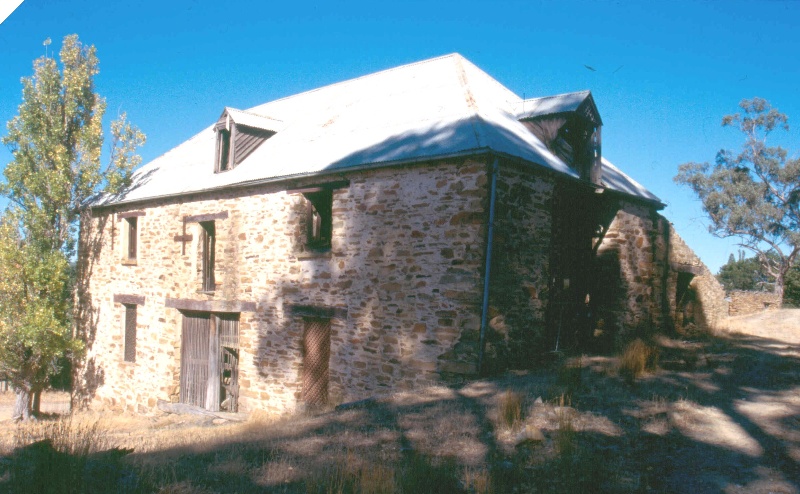

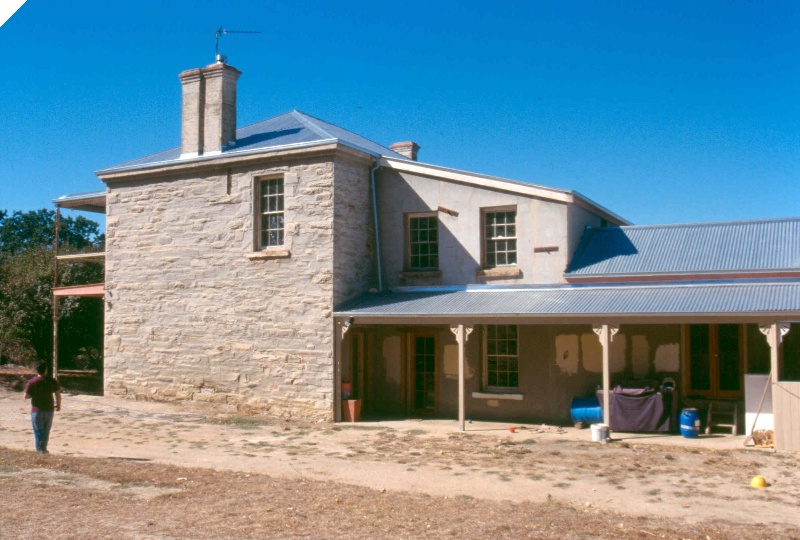
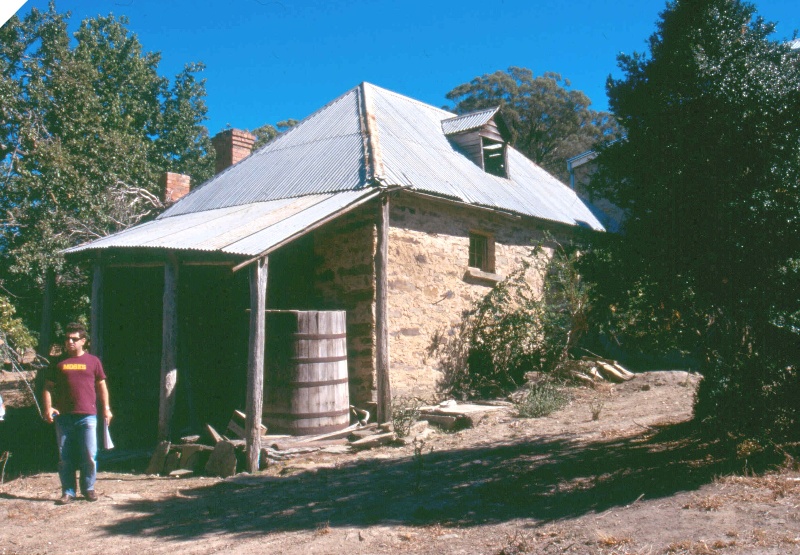
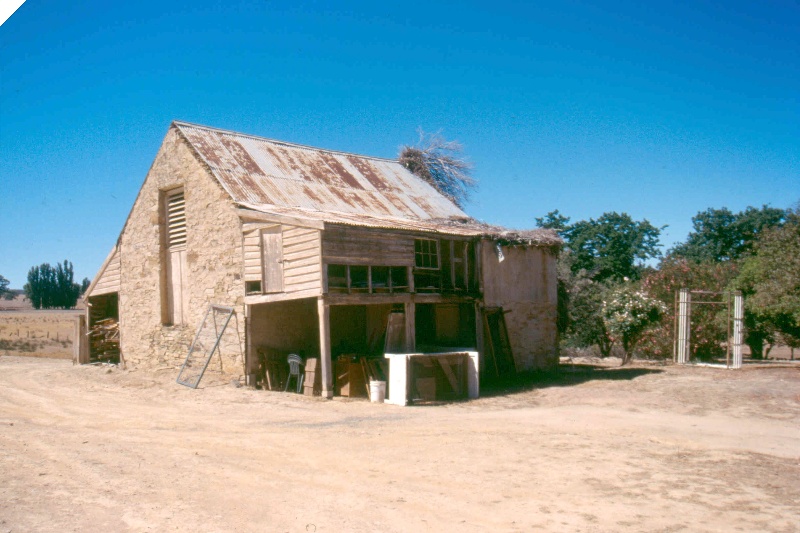
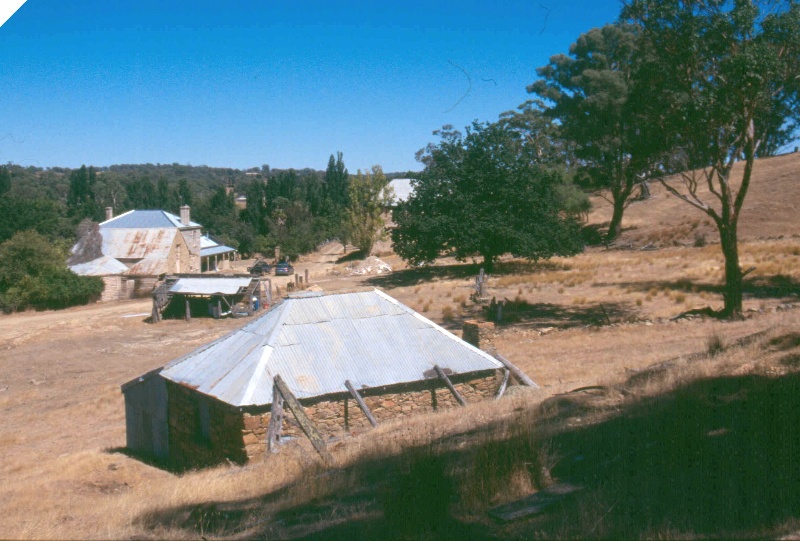
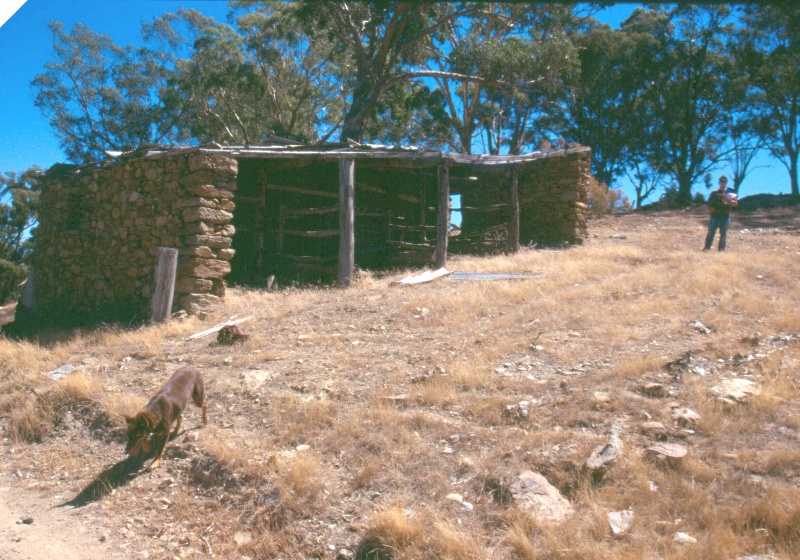
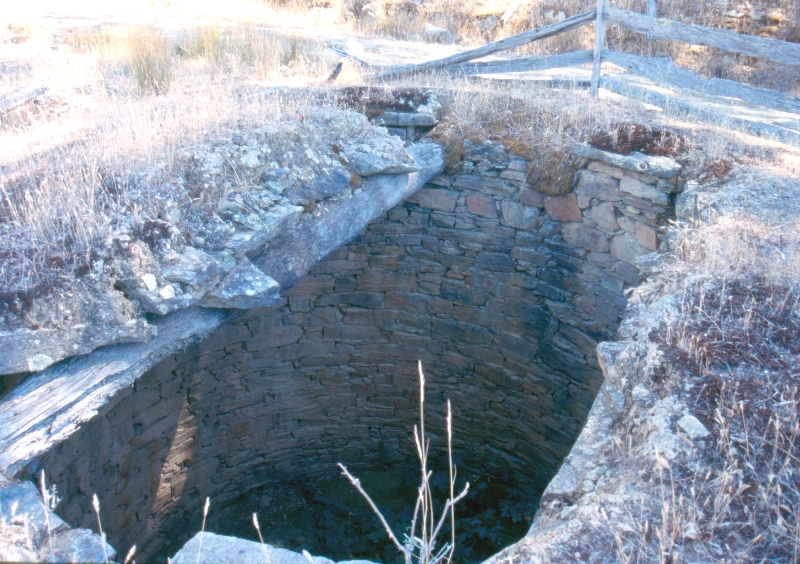
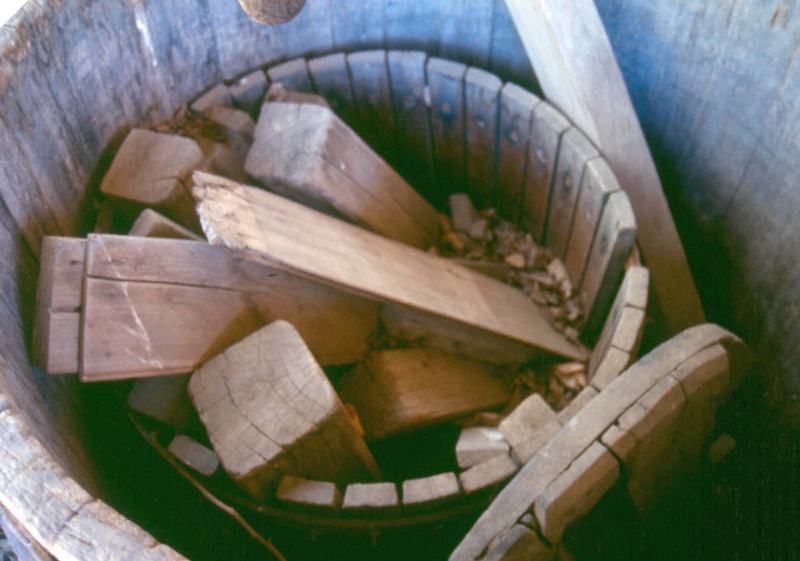



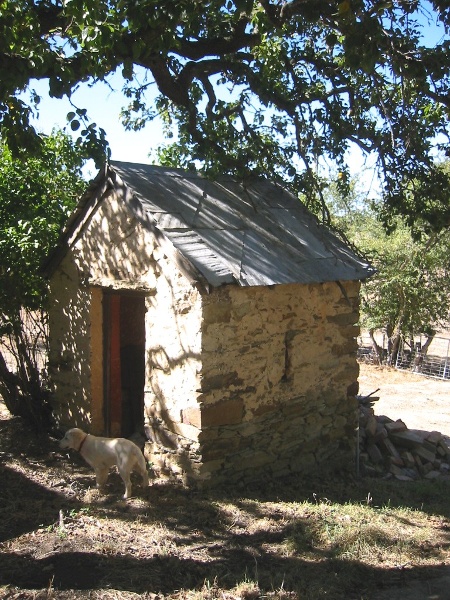

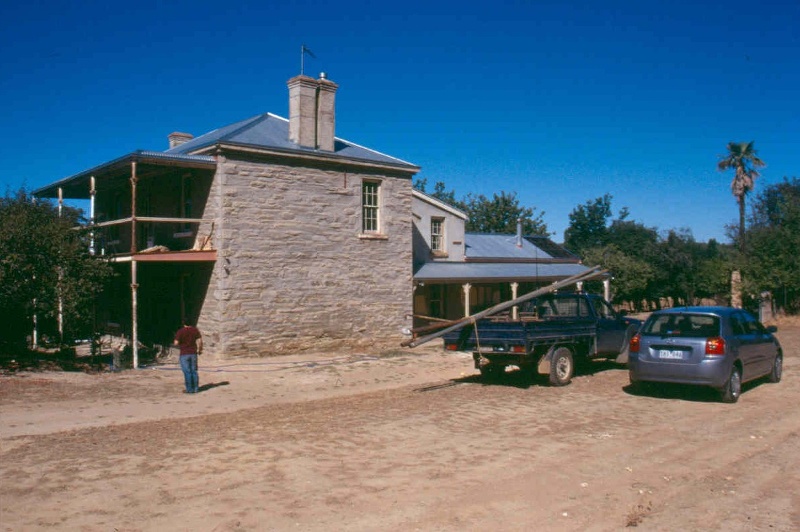

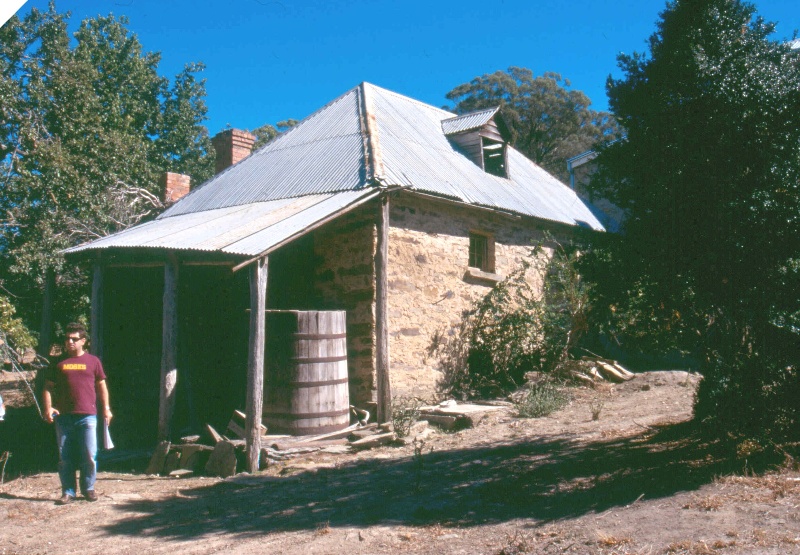
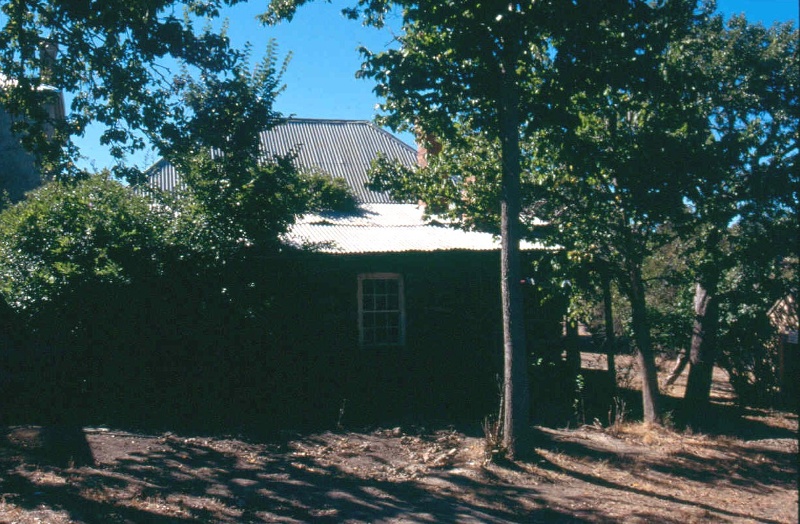
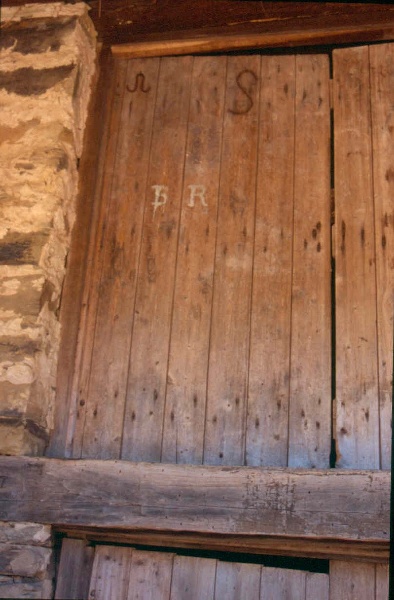
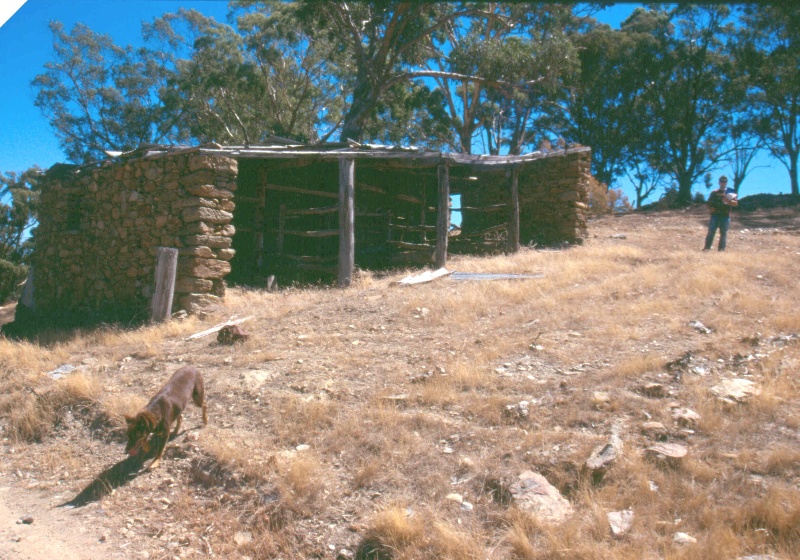
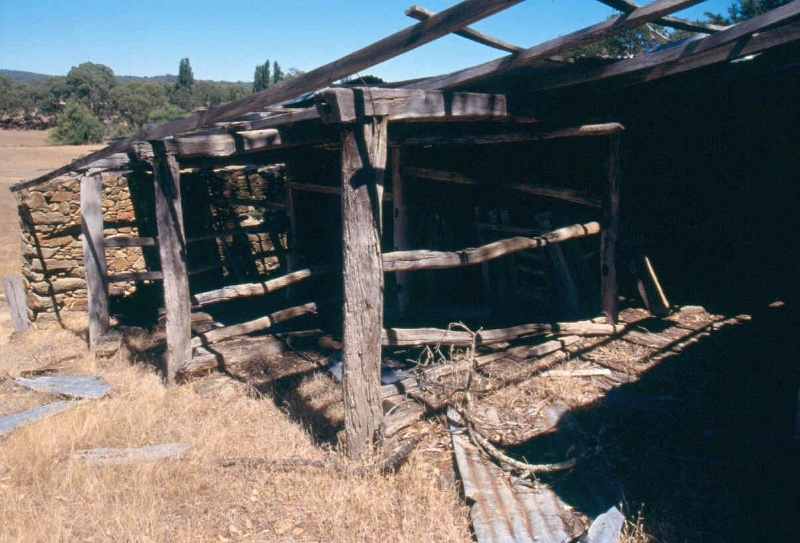
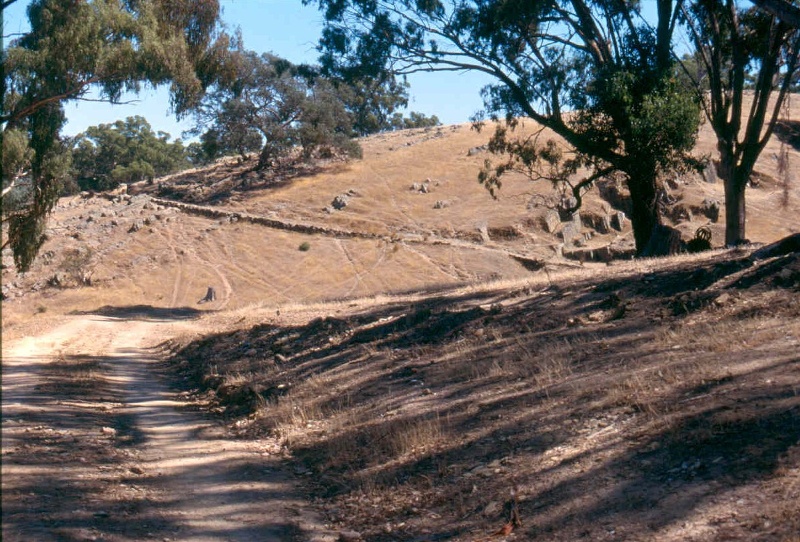

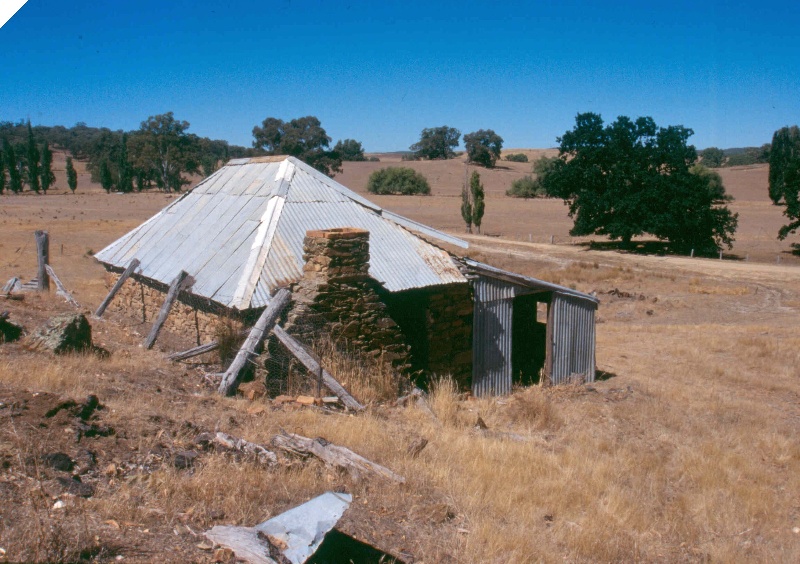
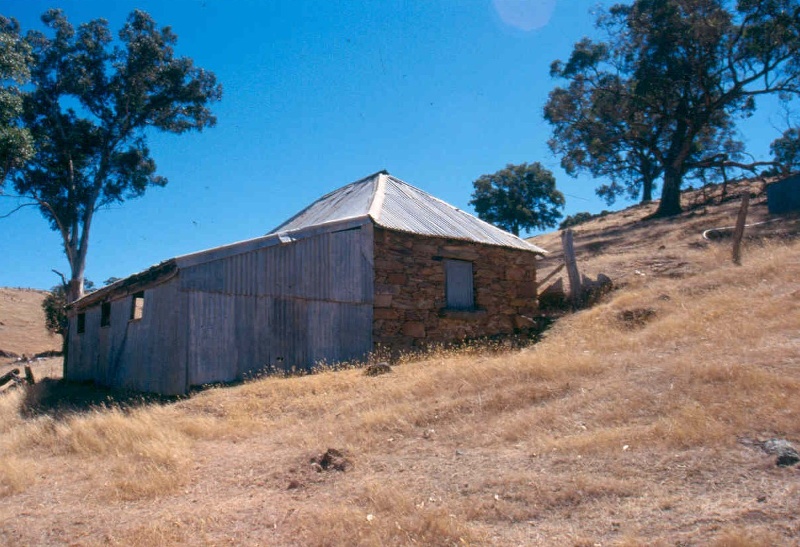
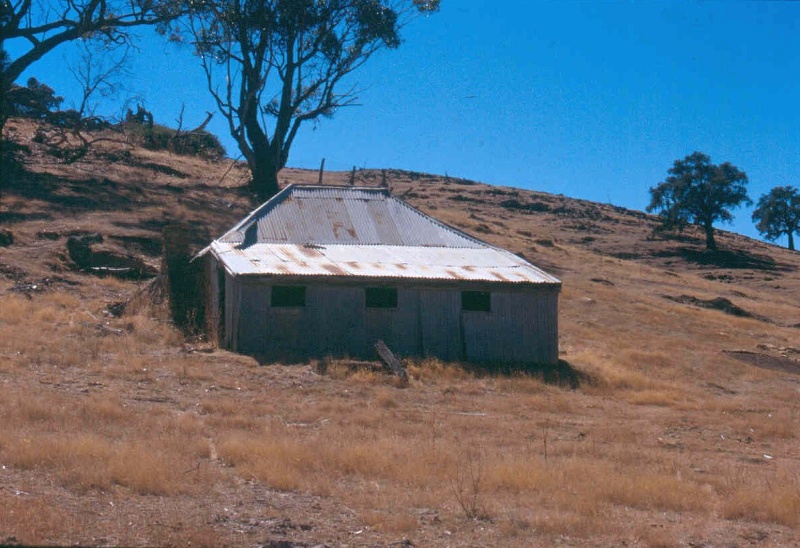
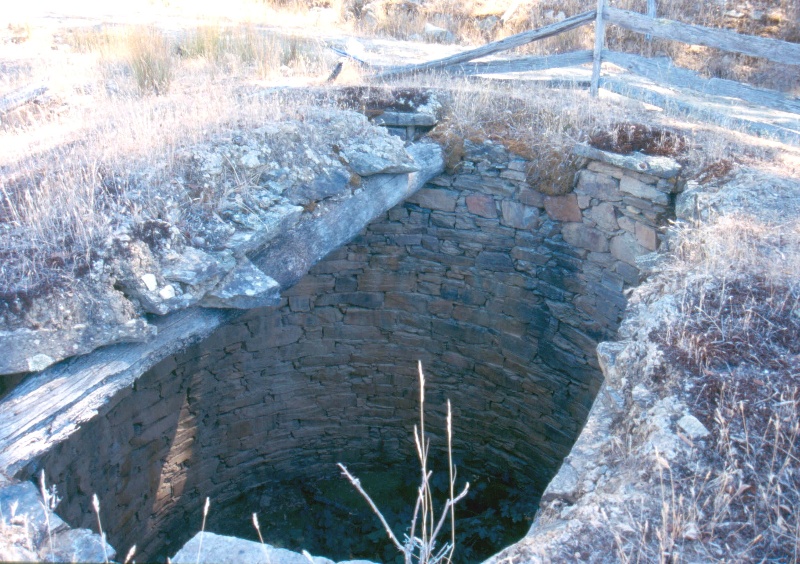

Statement of Significance
What is significant?
Elvezia is a large and intact example of a dairy farm built and run from the 1860s onwards by Swiss Italian (Ticinese) migrants. Its buildings demonstrate construction and farming techniques brought to Victoria by Swiss Italians.Seven vernacular stone and corrugated iron structures, some of which contain domestic and industrial equipment, constitute the Elvezia complex. They are: the main house, barn, piggery/stables, kitchen, toilet, creamery and blacksmith shed. The Barn and house are the largest buildings and best display the highly skilled stonework. The interior of the house, kitchen and barn also demonstrate skilled timber work in the form a staircase, turned balustrades and the use of adzed, milled and sawn bush logs for structural purposes. The complex also includes a number of associated features, these are: A well, the road that serviced the complex and the remains of a smokehouse.
The creamery includes industrial equipment used in Elvezia's function as the Yandoit Butter Factory and the kitchen building contains a wine press. The well and cellars in the kitchen building and the house are of potential archaeological significance.
Elvezia is a direct and tangible link to the exponential and multicultural growth of Victoria during and after the gold rush period of the 1850s which facilitated the development of a secondary sector such as commercial agriculture and, particularly, dairy farming. Dairying is presumed to have provided capital for the ongoing development of the Elvezia complex during its formative stages. Its most prosperous period is believed to be from the late 1880s to approximately 1906, the time when the Royal Commission on Vegetable Products 1884 provided financial incentives for butter made for export and the centrifugal separator made large volume butter manufacture possible. Elvezia functioned as a butter factory and local creamery in this period.
The ownership of Elvezia has been in the Righetti family since the allotment on which the buildings are located was alienated from the Crown in 1863 by Battista Righetti, a Swiss Italian from the village of Someo in the Swiss canton of Ticino. Government legislation such as the Land Act 1862 enabled cheap acquisition of land for potential farmers and the prerequisite of British citizenship was vital in encouraging Ticinese to remain in Victoria after gold petered out. Battista?s naturalization in 1862 and land acquisition in 1863 appear to be motivated by this legislation.
How is it significant?
Elvezia is of historic, architectural, scientific (technological) and archaeological significance to the state of Victoria.
Why is it significant?
Elvezia is of historic significance for its association to Swiss Italian immigrants who came to Victoria in response to economic hardships and political instability in Switzerland, and the lure of gold on the central Victorian goldfields in the 1850s. The Jim Crow diggings of 1854 attracted miners to the Daylesford district including Swiss Italian immigrants who established a large community in the area.
Elvezia is of historical significance to the history of migration and settlement in Victoria as a multicultural society began to develop during the gold rushes of the 1850s. It is a large and intact collection of buildings that demonstrates the self-sufficient Swiss Italian way of life and their adaptation to the land. The Ticinese are an important cultural group as one of the first to settle in the state.
Elvezia is of scientific (technological) significance as an early, large and intact collection of purpose built structures of which the creamery and its industrial equipment demonstrate nineteenth century dairy practices and development.
Elvezia is of architectural significance because the buildings display skilled use of local (Ordovician) sandstone in a random coursed rubble manner. The use of stone is both unusual and aesthetically adept and illustrates vernacular construction by Swiss Italians.
Elvezia is of architectural significance for the highly skilled timber work demonstrated by adzed, milled and sawn bush timbers as structural elements in the barn, or decorative turned balustrades in the kitchen and a staircase in the house.
Elvezia is of potential archaeological significance for the presence of cellars beneath the house and kitchen building, and the existence of the well. Archaeological investigations could reveal objects that are associated with the early running of Elvezia.
-
-
ELVEZIA HOMESTEAD COMPLEX - History
CONTEXTUAL HISTORY
Yandoit
Yandoit is a rural town which lies the central highlands of Victoria, north east of Daylesford and Hepburn Springs. The Victorian Government Gazette mentions Yandoit in 1859 (Yandoit Local History File, La Trobe Library, SLV) which is the same year it was first surveyed (Parish of Yandoit, Map, 1859). Yandoit grew out of the gold rushes of central Victoria which spanned from Strangeways to Daylesford. The Jim Crow goldfield at Yandoit in 1854 (Flett, 1971, p. 402) attracted miners to the area, a feature of which was the arrival of Swiss Italians immigrants from Ticino.Ticino
Ticino is a canton of Switzerland located on the Swiss-Italian border. It is a mountainous area and the only canton where Italian is the main language. Its vernacular architecture is marked by stone buildings using very little mortar (Sagazio, 1990, p. 25) and many structures built in this manner still survive in and around Yandoit.Between 1854 and 1855, 2000 Italian speaking Swiss from Ticino came to Victoria (Broome, 1984, p. 69). They were prompted to leave Switzerland by many factors including poor land, low income and political turmoil. Indeed, disagreements between Ticino and Austria which ruled nearby Lombardi – an accessible and prosperous area where many Ticinese worked – saw Austria close its border to Ticino and expel some Ticinese from Lombardi in 1847 (Gentilli, 1988, p2). This was followed by a second economic blockade in 1850 and immediate expulsion of all 4077 Ticinese from the Lombardo-Veneto region in response to riots in Milan (Gentilli, 1988, p 2) that were demanding a unified Italian state. In sum, adverse local circumstances, elaborate incentives created by Swiss shipping agencies, availability of funds to assist emigrations by local communes (councils) and the lure of gold in California and Victoria meant that many Ticinese were persuaded to emigrate to solve their economic problems (Gentilli, 1988, Pp. 2-3).
Swiss-Italian Influences in Daylesford / Yandoit
Many Ticinese intended to come to Australia, make their fortunes and return home to their wives and families. Considering this, and their lack of success in mining (Gentilli, 1988, p. 11), the fact that most Ticinese remained in Victoria is surprising, and may be attributed to the possibility of land ownership.The need to stabilise the population saw the Victorian Government release land on favourable conditions by means of the Lands Act 1862 and 1869. British citizenship was required for land purchase and induced Ticinese to seek naturalization (Gentilli, 1998, p. 8). Eventually some migrants came to own large parts of land via selection. Battista Righetti acquired large parts of land immediately after these laws were enacted (Public Records Office, Selection Files 2254-31, 2255-31, 3596-31 et. al.) and became an influential land owner in Yandoit.
Today many Swiss Italian and Italian influences are evident in the Daylesford district. These include collections of vernacular farm buildings including Elvezia, the Gervasoni homestead (VHR: H808), Locarno (National Trust File B2537), Parma House (VHR: H608) and the Former Macaroni Factory (VHR: H407). The Swiss Italian fiesta, serving of Bull Boar sausages (introduced by Ticinese) at local eateries and even the popularity of mineral springs in the area are present day evidence of this influence.
Dairy Farms and Butter
Dairying is pivotal in the story of Elvezia. Pastoralists and farmers needed milk, butter and cheese for their families and employees but milk had to be turned to butter if it was to reach Melbourne in edible condition. Prior to the centrifugal separator, developed by Gustav de Laval in Sweden in the 1870s, butter production was labour intensive and the product would often spoil quickly (Dingle, 1984, p. 115). The introduction of separators and the Royal Commission on Vegetable Products 1884 stimulated the development of the butter industry. This commission identified a key range of products that could be grown and produced on farms profitably, and from 1888 bonuses were paid on exported butter (Dingle, 1984, p. 116). Moreover, new butter factories and creameries (separated cream before transport to nearest factory) attracted government bonuses.Transport and marketing were reorganised and government cool stores built in Melbourne to facilitate butter export to the United Kingdom. This was a successful arrangement for many farmers, including Battista Righetti. By 1895 there were 174 factories and 300 creameries in Victoria (Dingle, 1984, p. 117). After 1900 the export market was flooded and competition from margarine increased (Dingle, 1984, p. 119). Many factories closed and butter production slowed considerably.
HISTORY OF PLACE
Elvezia
Battista Righetti arrived in Australia in 1855 at 15 years old. It is possible that he was attracted by gold or that he simply followed one of his many siblings to the Victorian goldfields upon arrival to Australia.Battista eventually went on to marry Elisabetta Perinoni and secure a piece of land in Yandoit. This allotment (Section 10, Lot 3. See also PRO Selection File 823/49) was alienated from the Crown in 1863, the same year as his naturalisation (Gentilli, 1988, p 91). This suggests that the Land Act 1862 provided him with an incentive to stay in Victoria by providing the possibility of land ownership.
Gentilli (1988, p. 8) claims that the Ticinese dream was to acquire land and build a two storey stone house with a wine cellar and cheese room like those owned by the wealthy in Ticino. By doing so, the immigrants could create a self sufficient farm and resume the life they had in Switzerland, but this time in a markedly more prosperous place than Ticino. As a result, many Swiss Italians settled in the Daylesford district after the gold petered out because the hills reminded them of those back in Switzerland. Moreover, the trauma of settling in a new land was eased somewhat by family networks and assistance available to them because they created their own distinctive community which enabled the retention of a cultural identity and agricultural traditions (Vines, 1993, Pp. 4-5).
It must be noted however, that Elvezia’s features go beyond it being an intact example of a Swiss Italian farm and a large collection of stone buildings. Under Battista’s control and with the aid of favourable legislation, government initiatives and the advancement of technology, Elvezia became a thriving dairy farm and the Yandoit Butter Factory and local creamery. It is thought that up to 40 men where employed at Elvezia in its peak operational period and the butter it produced is claimed to have won international awards (Jacobs, 2000, Y267). This period of prosperity may have contributed to the size and complexity of Elvezia’s buildings and the ability of Battista Righetti to acquire a number of subsequent allotments in Yandoit.
Ownership of the property has remained in the Righetti family and their association with the land can be traced through several generations. In fact, published work by Regina Righetti, daughter of Battista and Elisabetta, shows her affinity for Yandoit by including poems entitled, ‘The Jim Crow Creek Yandoit’ and ‘The hills that are calling me’ (Righetti, 1974). Elvezia is currently in the possession of Paul Righetti who lives in the main house and is attempting to renovate and restore key structures of the complex. This continued association of the family to Elvezia and its consequential and subsequent evolution will also become valuable facets of its history.
ELVEZIA HOMESTEAD COMPLEX - Permit Exemptions
General Exemptions:General exemptions apply to all places and objects included in the Victorian Heritage Register (VHR). General exemptions have been designed to allow everyday activities, maintenance and changes to your property, which don’t harm its cultural heritage significance, to proceed without the need to obtain approvals under the Heritage Act 2017.Places of worship: In some circumstances, you can alter a place of worship to accommodate religious practices without a permit, but you must notify the Executive Director of Heritage Victoria before you start the works or activities at least 20 business days before the works or activities are to commence.Subdivision/consolidation: Permit exemptions exist for some subdivisions and consolidations. If the subdivision or consolidation is in accordance with a planning permit granted under Part 4 of the Planning and Environment Act 1987 and the application for the planning permit was referred to the Executive Director of Heritage Victoria as a determining referral authority, a permit is not required.Specific exemptions may also apply to your registered place or object. If applicable, these are listed below. Specific exemptions are tailored to the conservation and management needs of an individual registered place or object and set out works and activities that are exempt from the requirements of a permit. Specific exemptions prevail if they conflict with general exemptions. Find out more about heritage permit exemptions here.Specific Exemptions:1.All works to the calf shed including demolition and modification but not addition provided that a comprehensive recording of the structure is submitted to and approved by the Executive Director prior to its demolition.2. Minor repairs and maintenance that replace like with like materials, e.g replacement of existing corrugated iron with galvanized corrugated iron sheeting
General Conditions: 1. All exempted alterations are to be planned and carried out in a manner which prevents damage to the fabric of the registered place or object. General Conditions: 2. Should it become apparent during further inspection or the carrying out of works that original or previously hidden or inaccessible details of the place or object are revealed which relate to the significance of the place or object, then the exemption covering such works shall cease and the Executive Director shall be notified as soon as possible. Note: All archaeological places have the potential to contain significant sub-surface artefacts and other remains. In most cases it will be necessary to obtain approval from Heritage Victoria before the undertaking any works that have a significant sub-surface component. General Conditions: 3. If there is a conservation policy and plan approved by the Executive Director, all works shall be in accordance with it. Note: The existence of a Conservation Management Plan or a Heritage Action Plan endorsed by Heritage Victoria provides guidance for the management of the heritage values associated with the site. It may not be necessary to obtain a heritage permit for certain works specified in the management plan. General Conditions: 4. Nothing in this declaration prevents the Executive Director from amending or rescinding all or any of the permit exemptions. General Conditions: 5. Nothing in this declaration exempts owners or their agents from the responsibility to seek relevant planning or building permits from the responsible authorities where applicable. Regular Site Maintenance : The following site maintenance works are permit exempt under section 66 of the Heritage Act 1995, a) regular site maintenance provided the works do not involve the removal or destruction of any significant above-ground features or sub-surface archaeological artefacts or deposits; b) the maintenance of an item to retain its conditions or operation without the removal of or damage to the existing fabric or the introduction of new materials; c) cleaning including the removal of surface deposits, organic growths, or graffiti by the use of low pressure water and natural detergents and mild brushing and scrubbing; d) repairs, conservation and maintenance to plaques, memorials, roads and paths, fences and gates and drainage and irrigation. e) the replacement of existing services such as cabling, plumbing, wiring and fire services that uses existing routes, conduits or voids, and does not involve damage to or the removal of significant fabric. Note: Surface patina which has developed on the fabric may be an important part of the item’s significance and if so needs to be preserved during maintenance and cleaning. Note: Any new materials used for repair must not exacerbate the decay of existing fabric due to chemical incompatibility, obscure existing fabric or limit access to existing fabric for future maintenance. Repair must maximise protection and retention of fabric and include the conservation of existing details or elements. Fire Suppression Duties : The following fire suppression duties are permit exempt under section 66 of the Heritage Act 1995, a) Fire suppression and fire fighting duties provided the works do not involve the removal or destruction of any significant above-ground features or sub-surface archaeological artefacts or deposits; b) Fire suppression activities such as fuel reduction burns, and fire control line construction, provided all significant historical and archaeological features are appropriately recognised and protected; Note: Fire management authorities should be aware of the location, extent and significance of historical and archaeological places when developing fire suppression and fire fighting strategies. The importance of places listed in the Heritage Register must be considered when strategies for fire suppression and management are being developed. Weed and Vermin Control : The following weed and vermin control activities are permit exempt under section 66 of the Heritage Act 1995, a) Weed and vermin control activities provided the works do not involve the removal or destruction of any significant above-ground features or sub-surface archaeological artefacts or deposits; Note: Particular care must be taken with weed and vermin control works where such activities may have a detrimental affect on the significant fabric of a place. Such works may include the removal of ivy, moss or lichen from an historic structure or feature, or the removal of burrows from a site that has archaeological values. Landscape Maintenance : The following landscape maintenance works are permit exempt under section 66 of the Heritage Act 1995, a) landscape maintenance works provided the activities do not involve the removal or destruction of any significant above-ground features or sub-surface archaeological artefacts or deposits; b) watering, mowing, top-dressing and fertilising necessary for the continued health of plants, without damage or major alterations to layout, contours, plant species or other significant landscape features; c) pruning to control size, improve shape, flowering or fruiting and the removal of diseased, dead or dangerous material, in accordance with Australian Standard; Pruning of Amenity Trees AS 4373; d) tree surgery by a qualified horticulturalist or tree surgeon necessary for the health of those plants. Public Safety and Security : The following public safety and security activities are permit exempt under section 66 of the Heritage Act 1995, a) public safety and security activities provided the works do not involve the removal or destruction of any significant above-ground structures or sub-surface archaeological artefacts or deposits; b) the erection of temporary security fencing, scaffolding, hoardings or surveillance systems to prevent unauthorised access or secure public safety which will not adversely affect significant fabric of the place including archaeological features; c) development including emergency stabilisation necessary to secure safety where a site feature has been irreparably damaged or destabilised and represents a safety risk to its users or the public. Note: Urgent or emergency site works are to be undertaken by an appropriately qualified specialist such as a structural engineer, or other heritage professional. Signage and Site Interpretation : The following Signage and Site Interpretation activities are permit exempt under section 66 of the Heritage Act 1995, a) signage and site interpretation activities provided the works do not involve the removal or destruction of any significant above-ground structures or sub-surface archaeological artefacts or deposits; b) the erection of non-illuminated signage for the purpose of ensuring public safety or to assist in the interpretation of the heritage significance of the place or object and which will not adversely affect significant fabric including landscape or archaeological features of the place or obstruct significant views of and from heritage values or items; c) signage and site interpretation products must be located and be of a suitable size so as not to obscure or damage significant fabric of the place; d) signage and site interpretation products must be able to be later removed without causing damage to the significant fabric of the place; Note: The development of signage and site interpretation products must be consistent in the use of format, text, logos, themes and other display materials. Note: Where possible, the signage and interpretation material should be consistent with other schemes developed on similar or associated sites. It may be necessary to consult with land managers and other stakeholders concerning existing schemes and strategies for signage and site interpretation. Mineral Exploration : The following Mineral Exploration activities are permit exempt under section 66 of the Heritage Act 1995, a) mineral Exploration activities provided the works do not involve the removal or destruction of any significant above-ground features or sub-surface archaeological artefacts or deposits; b) preliminary non-intrusive exploration, including geological mapping, geophysical surveys, and geochemical sampling and access to shafts and adits; c) advanced forms of exploration (drilling), including the location of drill pads and access tracks where this has been the subject of on-site negotiation and agreement with representatives of Heritage Victoria, DSE and Parks Victoria, and where all significant historic site features have been identified and protected as part of an approved work plan. Minor Works : Note: Any Minor Works that in the opinion of the Executive Director will not adversely affect the heritage significance of the place may be exempt from the permit requirements of the Heritage Act. A person proposing to undertake minor works may submit a proposal to the Executive Director. If the Executive Director is satisfied that the proposed works will not adversely affect the heritage values of the site, the applicant may be exempted from the requirement to obtain a heritage permit. If an applicant is uncertain whether a heritage permit is required, it is recommended that the permits co-ordinator be contacted.ELVEZIA HOMESTEAD COMPLEX - Permit Exemption Policy
1. The policy is to maintain the cultural heritage significance of the collection of buildings that constitute Elvezia and their relationship to each other. Significance lies in the high integrity of the structures which demonstrate the self sufficient rural way of life of Swiss Italian migrants as well as their construction techniques. Industrial fabric and remnants of butter making equipment in the Creamery are also of importance as evidence of Elvezia’s function as the Yandoit butter factory and local creamery. Alterations and additions to the collection of buildings either internally or externallymay diminish the significance of place by decreasing understanding and integrity. Preservation and restoration of original fabric and the relationship of buildings with each other and their equipment is of primary importance.
2. The derelict lean-to calf shed is of little significance and its demolition will not adversely affect Elvezia. Demolition of this structure is permit exempt provided that a comprehensive recording of the structure is submitted to and approved by the Executive Director prior to its demolition.
3. The smokehouse is in a dilapidated state but its function and presence are important aspects of Elvezia’s function. Demolition will require a permit from Heritage Victoria and comprehensive recording of the structure.
-
-
-
-
-
ELVEZIA HOMESTEAD COMPLEX
 Victorian Heritage Register H2065
Victorian Heritage Register H2065 -
JIM CROW CREEK MINING RUINS
 Victorian Heritage Inventory
Victorian Heritage Inventory -
EUCALYPTUS CAMALDULENSIS
 National Trust
National Trust
-
'CARINYA' LADSONS STORE
 Victorian Heritage Register H0568
Victorian Heritage Register H0568 -
1 Alexander Street
 Yarra City
Yarra City -
1 Botherambo Street
 Yarra City
Yarra City
-
-






